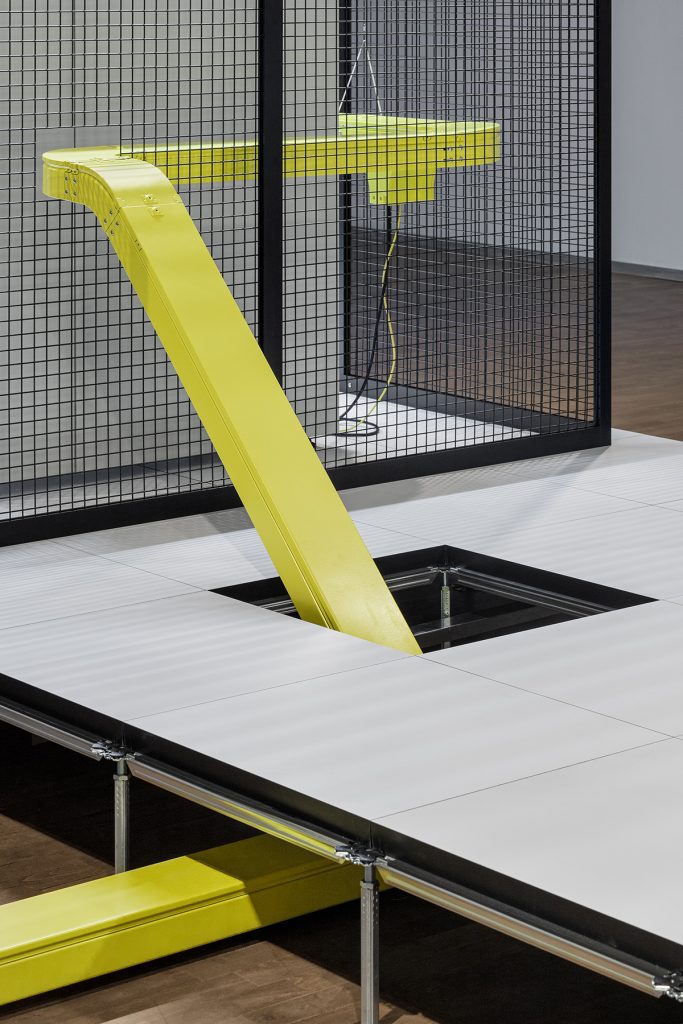EVA & FRANCO MATTES
Generazione Critica: Your collaboration began in the 90s using the internet address 01001011110101101.org as your name and then consolidated as Eva and Franco Mattes. What is the choice that lies in using that domain as a pseudonym and how did you come to using your names?
Eva & Franco Mattes: In many of our works, we use the identity of other people or entities. We invented an artist named Darko Maver; we impersonated Nike to stage a false advertising campaign; we attributed a sculpture that we had made to Maurizio Cattelan and so on. We have always advocated anonymity and pseudonyms in all their forms, both online and offline. We are not very happy with how social media is pushing users to use their real names, it is becoming the internet of names. Anonymity is liberating, the ability to do and say things without being permanently attached to your real person is something it should protect, that’s why we are very interested in Tor and the darknet, the anonymous internet. Full disclaimer: Eva and Franco are not our real names 😉
GC: Since the beginning of your career internet has changed in a dizzying and uncontrollable way and continues to do so incessantly. Have these changes changed your attitude as well? Have there been moments or projects in which you questioned the centrality of the internet in your research?
E&FM: In the 90s we were obsessed with visibility, with traffic logs, with reaching an ever wider audience, but as time went by, and the advent of internet 2.0, we became more and more interested in the opposite: invisibility and disappearance, anonymous, deleting data, frying hard drives in the microwave…

GC: Your work deals with themes such as the authorship of the work of art, appropriation and the binomial copy – original. To pursue these investigations, the web is the basin from which to draw your raw material: looking at works such as “Agreements” (2014) and “Copie”s (2019) the copying process does not focus only on the work itself but arrives at the thought is behind, to the core of making it. In short, you have brought Duchamp’s ready-made to an earlier stage, removing the object and arriving at the idea. What are the criteria that guide you in these acts of appropriation of thought? Are there any references that inspired you or that led you forward in the development of this practice?
E&FM: Many have influenced us, from Duchamp who is essential, to the Neue Slowenische Kunst, the Negativland and Wu Ming who have been real mentors, then Jodi, Seth Price as well as many people online who we have never met but whose memes they keep us up at night. I can’t imagine making art without this crazy community around.

Eva & Franco Mattes, Most to Least Viewed, ph ©Melania Dalle Grave e Agnese Bedini, DSL Studio2
GC: Moving in art like hackers on the dark web, you try to undermine the foundations of a production and reproduction system, often playing with its limits and uniting art with a more pop culture. “What Has Been Seen” (2017) is a project in which the artwork has its origins from a meme but is able to reflect on crucial and relevant aspects of the contemporary. How important is the ironic aspect within your projects? And how much can pop culture be a lens for analyzing our present?
E&FM: We’ve always tried to use humor in our work, it’s a way to make a subject more digestible, it’s an easier entry point into a work. Just because something is funny doesn’t mean it can’t be deadly serious, it’s just that the complexity of the job isn’t thrown in your face but is somehow hidden under a layer of humour. A portion of the audience will only understand the fun part, while a smaller portion will try to dig a little deeper and hopefully have a more nuanced understanding of the piece, but both approaches are fine by me.

Eva & Franco Mattes, What Has Been Seen, 2017
GC: Once we get to this dark matter, it becomes necessary to implement a process of translation and restitution. How do you deal with the physical space of a gallery or an institution in which to physically insert the outcome of your research?
E&FM: I wouldn’t speak of translation, because translation is done after a text is finished, while in a good work the two things should develop together, organically, i.e. its circulation on the internet – as files – and circulation in the world of art – as a physical object – should be inseparable. Take “Ceiling Cat” for example: it’s a sculpture based on an old internet meme, a stuffed cat, peeking through a hole in the ceiling, and watching us as we look back at it. The sculpture is based on an image we found online, a very popular meme. Now the photos of our sculpture are starting to circulate, mixing with the other versions, so the work coexists in two different circulation systems, the art world and the internet, in constant negotiation between image and object. In this way, the end of an exhibition marks another beginning for the image.
After the San Francisco MoMA acquired the work, we entered into an agreement with the museum to relinquish ownership of the photo, so that anyone can copy and use it for any purpose, free of charge. We have placed the image into the public domain, via Wikimedia, and you are all welcome to download and use it.
17/11/2022

Eva & Franco Mattes, Most to Least Viewed ph ©Melania Dalle Grave e Agnese Bedini, DSL Studio3

